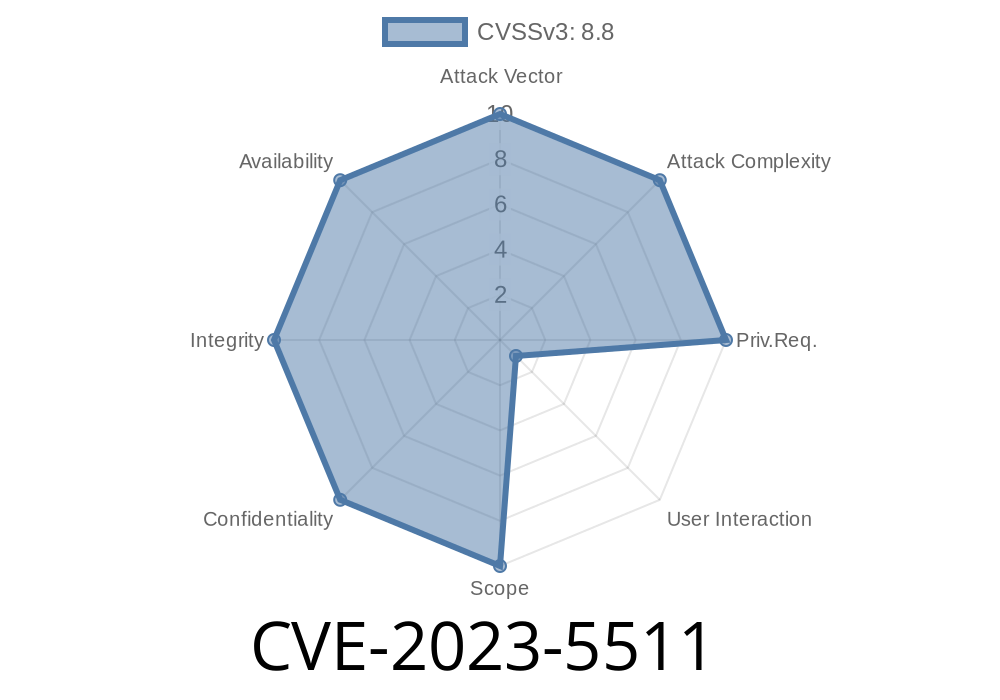A recently identified and assigned Common Vulnerabilities and Exposures (CVE) identification, CVE-2023-5511, points to a notable Cross-site Request Forgery (CSRF) vulnerability found in the GitHub repository snipe/snipe-it prior to version 6.2.3. The vulnerability could potentially allow threat actors to perform unintended and malicious actions on the affected web application. In this post, we discuss the complete exploit details and the necessary mitigation measures that can help protect web applications using Snipe-IT software from this security issue.
Vulnerability Details
Snipe-IT, a popular open-source IT asset management software built on the Laravel PHP framework, has been reported with a severe CSRF vulnerability. CSRF is an attack that tricks a victim into submitting unwanted requests on the attacker's behalf. This could potentially result in unauthorized actions being taken, including modifying sensitive data or hijacking user sessions.
The issue with Snipe-IT arises when users access the affected application using a web browser that does not have CSRF protections in place for certain requests. The vulnerability enables an attacker to potentially exploit these unprotected requests by tricking users into carrying out unintended actions.
In the Snipe-IT repository, the vulnerability exists in versions prior to v.6.2.3. It is crucial for users to update their Snipe-IT software to the latest version to mitigate this threat and protect their web applications.
GitHub Reference
Original GitHub Repository for Snipe-IT
Issue #9379: CSRF Vulnerability in Snipe-IT
Commit that fixes the issue CVE-2023-5511
Code Snippet
The vulnerable code snippet in Snipe-IT is found in the resources/views/hardware/create.blade.php file. The issue arises due to a missing CSRF token in the form's input field. To fix the vulnerability, the developers added a CSRF token field to the form, as shown in the code snippet below:
<!-- Original Vulnerable Code -->
<form class="form-horizontal" method="post" action="{{ route('hardware.store') }}" autocomplete="off" role="form" enctype="multipart/form-data">
<!-- ... -->
</form>
<!-- Fixed Code with CSRF Token -->
<form class="form-horizontal" method="post" action="{{ route('hardware.store') }}" autocomplete="off" role="form" enctype="multipart/form-data">
@csrf <!-- Added CSRF Token -->
<!-- ... -->
</form>
Mitigation Measures
To properly secure your web applications running the Snipe-IT software, follow these recommended mitigation measures:
1. Ensure you are using the latest version of Snipe-IT (v.6.2.3 or newer) to avoid this CSRF vulnerability.
2. Always perform regular security audits and updates for third-party software, dependencies, and libraries.
3. Enable CSRF protection in Laravel middleware to enforce the inclusion of CSRF tokens in all form submission requests. This can help protect your application even if individual CSRF tokens are missed in any forms.
4. Educate users on recognizing and avoiding phishing emails and suspicious links to minimize the risk of CSRF attacks.
Conclusion
In conclusion, CVE-2023-5511 highlights the importance of staying up-to-date with security patches and mitigating new threats that emerge. By applying the recommended security measures and staying informed about the latest developments in cybersecurity, web application owners and developers can ensure that vulnerabilities like CSRF are minimized, protecting their users and applications from potential attacks.
Timeline
Published on: 10/11/2023 01:15:00 UTC
Last modified on: 10/12/2023 18:02:00 UTC
